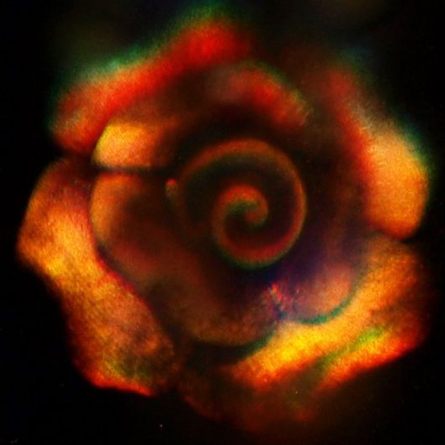Molecules/Matter & Energy
3-D effects without the glasses, plus portable X-rays and linking qubits in this week’s news
Glasses-free 3-D
A new type of hologram provides a 3-D image without glasses. And unlike many traditional holograms, this one comes in color. Current 3-D television technologies rely on overlapping images to give the illusion of depth. But the new technique, developed by Japanese scientists and published in the April 8 Science, uses white light to energize electrons in a thin film of metal. This energy reveals a hologram pre-etched by lasers into a second, overlying layer. Colorful apples, roses and origami cranes created this way maintain their appearance when seen from different angles, unlike the kinds of holograms used on credit cards. —Devin Powell

X-rays rubbed out
A simple way to make X-rays could lead to portable devices for medics in the field. Seth Putterman of UCLA built a machine that bumps rubber against hardened epoxy up to 20 times a second. Every touch discharges X-ray energy, much in the way that touching a doorknob can release a lower-energy static shock. The mechanism behind this triboelectric effect, which also produces X-rays when Scotch tape is peeled from a surface, is still largely unknown. By testing different materials, Putterman hopes to boost the strength of the X-rays tenfold to create machines that could run on a 12-volt battery. —Devin Powell
Quantum bit record
A new world record for linking together quantum bits, or qubits, brings quantum computing one step closer to usefulness. An international team of researchers entangled 14 atoms so they behaved like a single quantum particle. This feat trumps the previous record of 10 quantum bits. Published in the March 31 Physical Review Letters, the experiment also uncovers a difficulty that quantum computing will face as the number of bits continues to rise: As the number of qubits increases, boosting the computing power, the stability of the special quantum state that allows these atoms to store information falls more rapidly than expected. —Devin Powell






